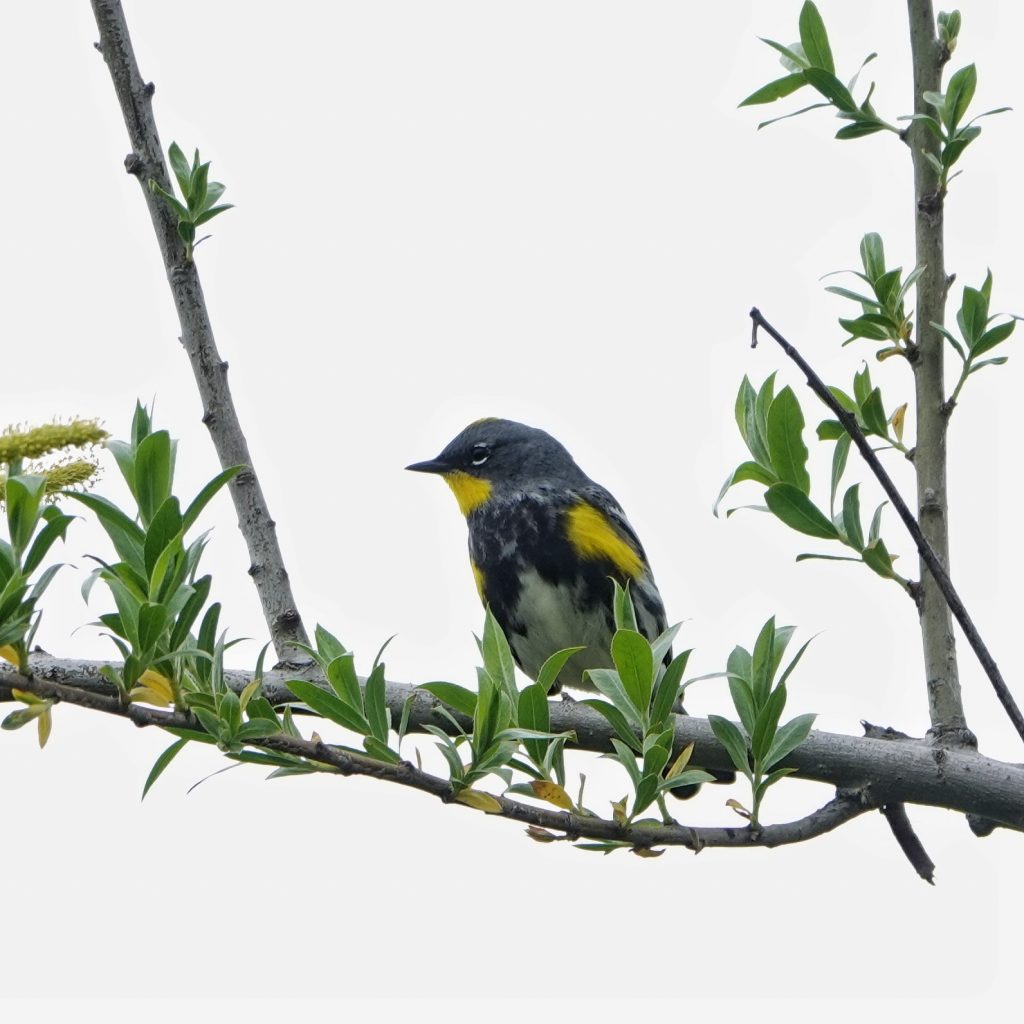
For anyone curious about my prolonged vacation from writing these profiles, I talk about it in this blog “Refocusing in Reirement’.
I would guess that many of those in our region who pay any attention to birds, especially folks in forested areas, have started seeing a lot of these beautiful birds already this year. They are not as secretive as most warblers, and tend to catch the eye by flashing their bright colors as they sortie out from tree limbs and other elevated places whilst hawking insects. They are also frequent gleaners around tree limbs and twigs, and can descend in great numbers upon fruit bearing trees and shrubs. I’ve even seen them foraging on lawns when rain has brought worms and larvae to the surface.
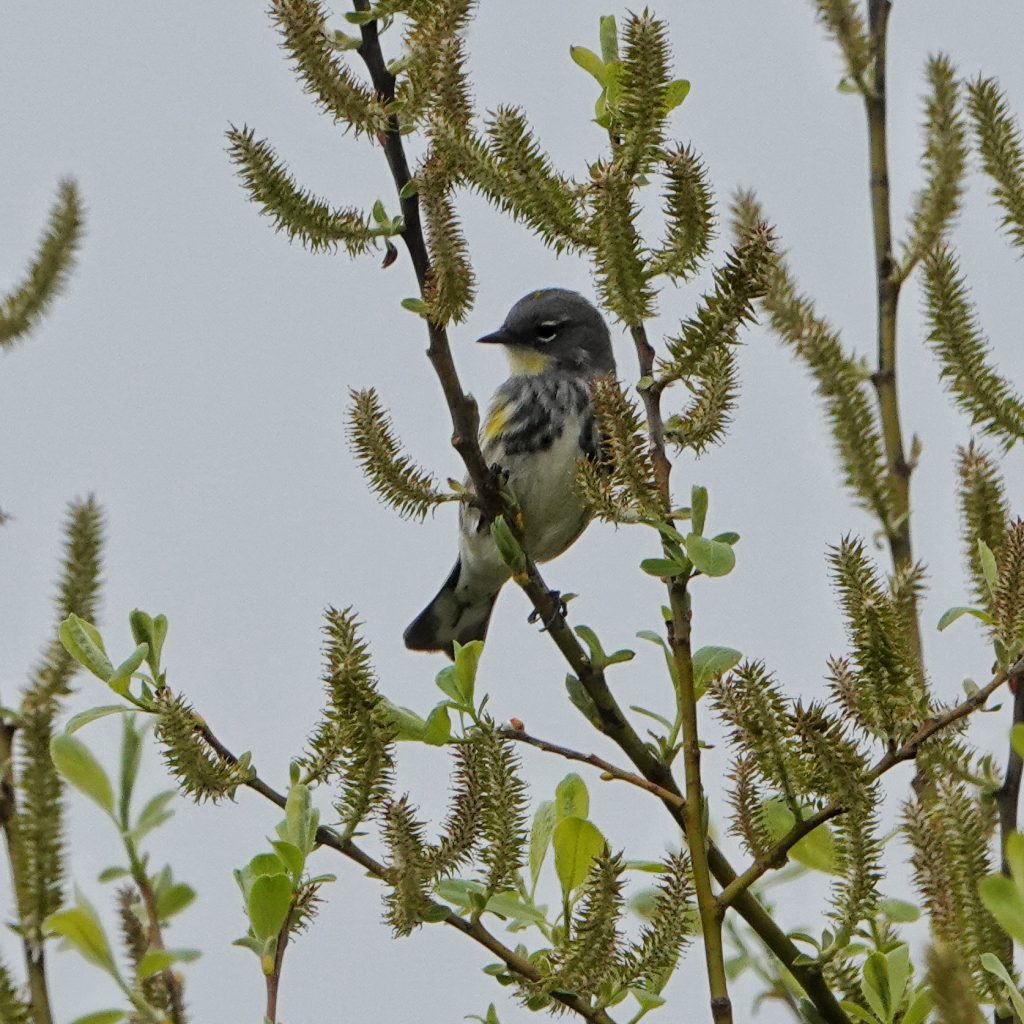
Yellow-rumped Warblers are the most common warblers in North America, and are one of the few warblers (Townsend’s and Orange-crowned are the other 2) that may overwinter west of the Cascades in our region. They manage our cold, wet winters by having a diverse diet of insects and fruit, including Bayberries and Wax Myrtle, which contain wax that is indigestible for other warbler species. Their overall coloring is more muted browns and grey in their non-breeding plumage, but they still display those flashes of yellow from rump and sides, delightfully shocking against the browns and grey of wintertime woods.
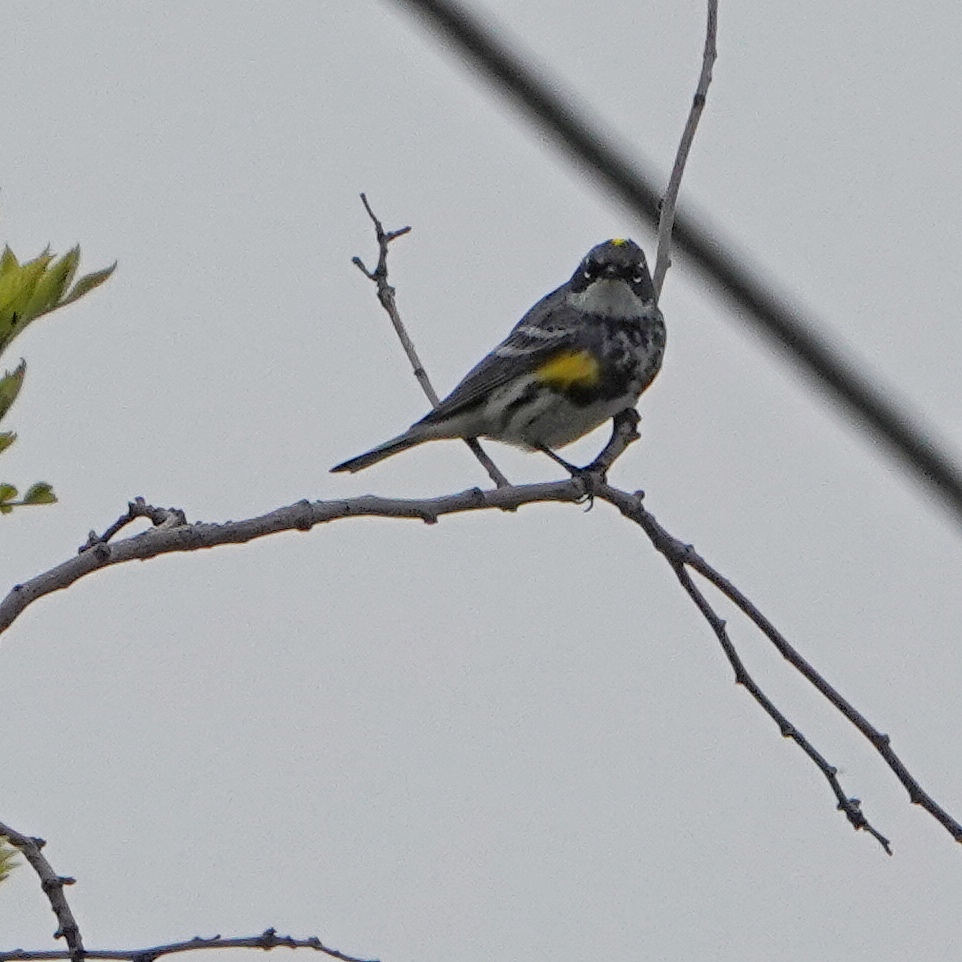
During migration we get both subspecies of Yellow-rumped Warblers in the PNW, the Audubon’s and Myrtle, but only Audubon’s breed here, and they can be found doing so in most of the forested areas of our region. Breeding plumage males are very easy to differentiate, since the Audubon’s have a vivid yellow throat, while the throat of a Myrtle is white, but females and non-breeding plumage birds also share this distinction, though it isn’t as vivid and contrasted. Audubon’s and Myrtles were considered to be separate species for many years, and there are those who would like to split them again, but there is apparently some interbreeding between the two (with confusing intergrading of throat color and wing bar distinctions) so that position seems untenable to me.
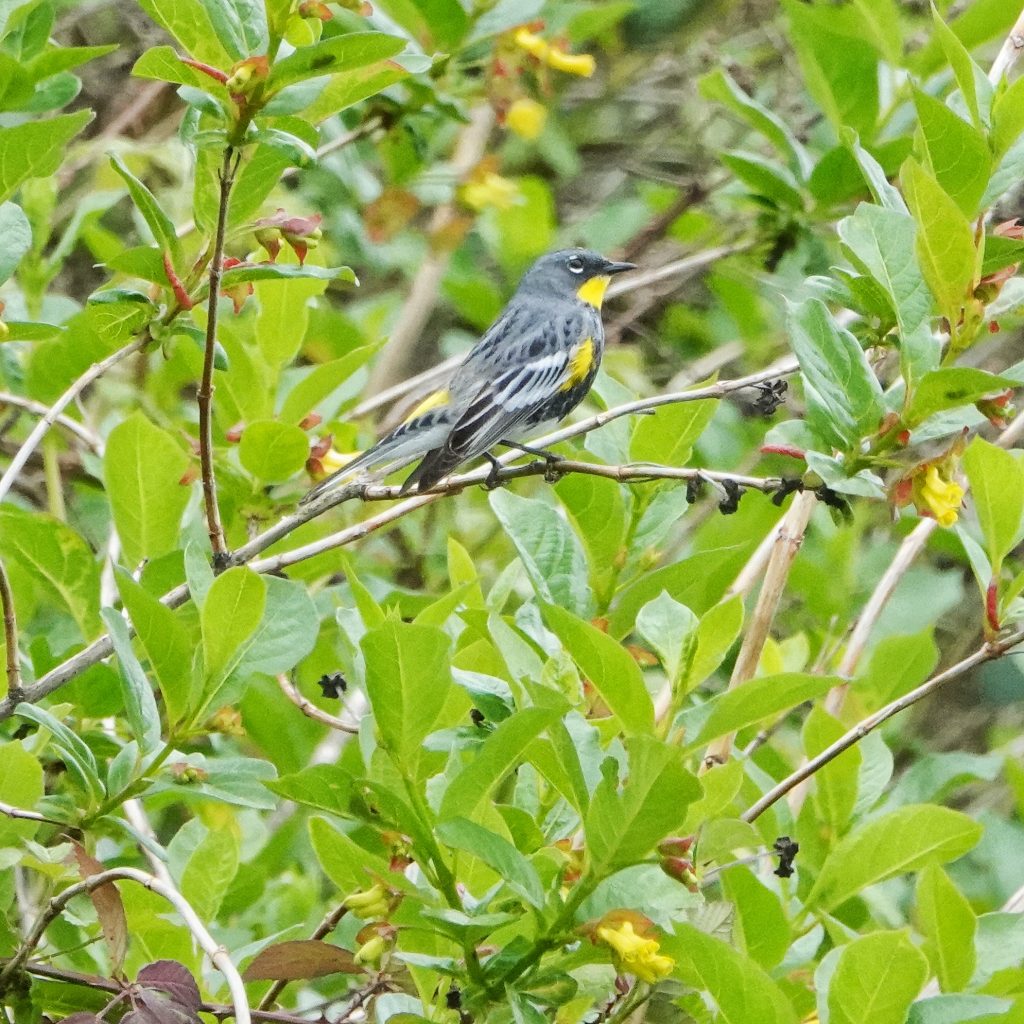
Setophaga coronata flocks often attract other species of birds, which can be a blessing and a curse. The curse has to do with the sheer numbers and activity of the Yellow-rumps distracting one from the presence of other species, and they will occasionally flush other birds, both conspecifics and outsiders, by territorial actions. But the blessing is that one can home in on a feeding flock and, if one’s search image is changed to exclude Yellow-rumps, other little jewels may be spied amongst them.
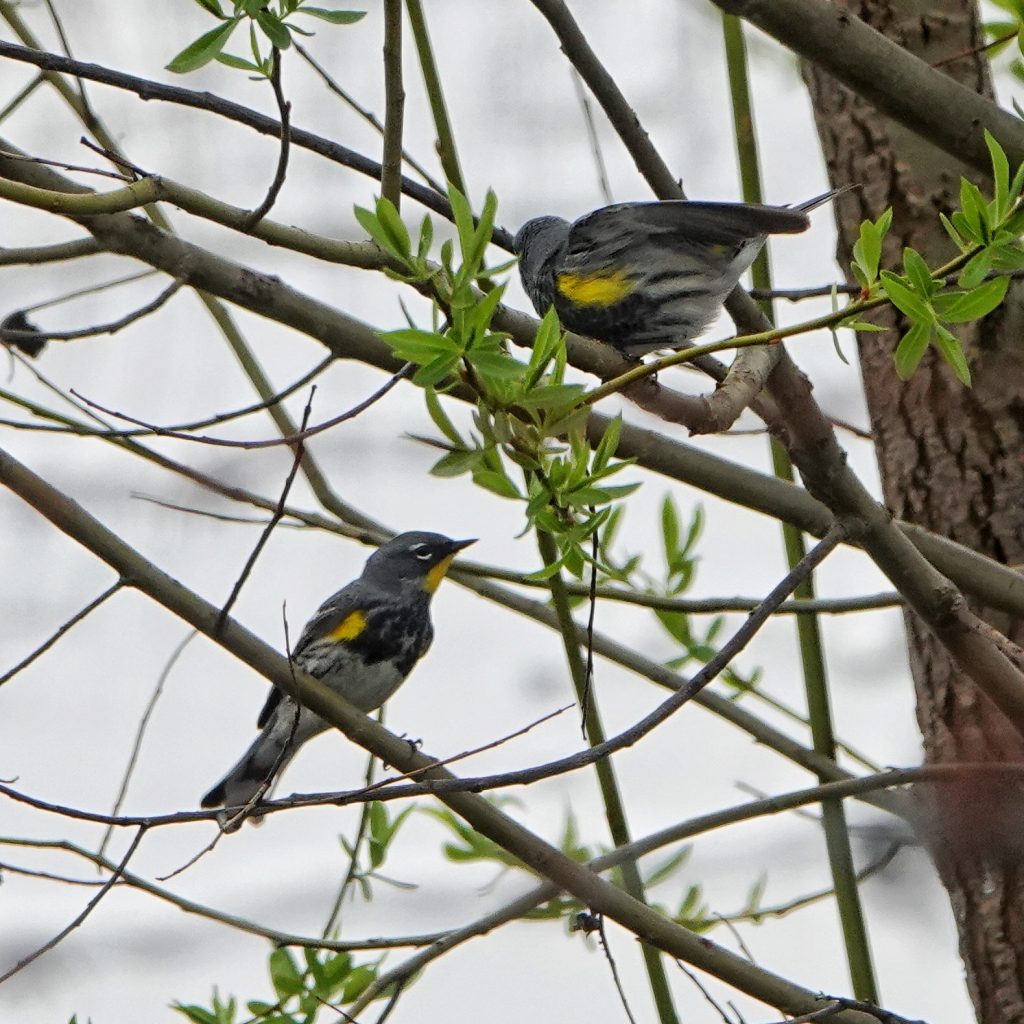
I was fortunate to have my camera with me when I stopped at Vanport in north Portland, Oregon last Monday, because I was merely planning to propitiate the Fitbit gods by doing a short walk. But before I even got out of my van I could see several Yellow-rumps hawking from the willows bordering the wetland, so I dug out the camera that I had foolishly left in my van the previous day.
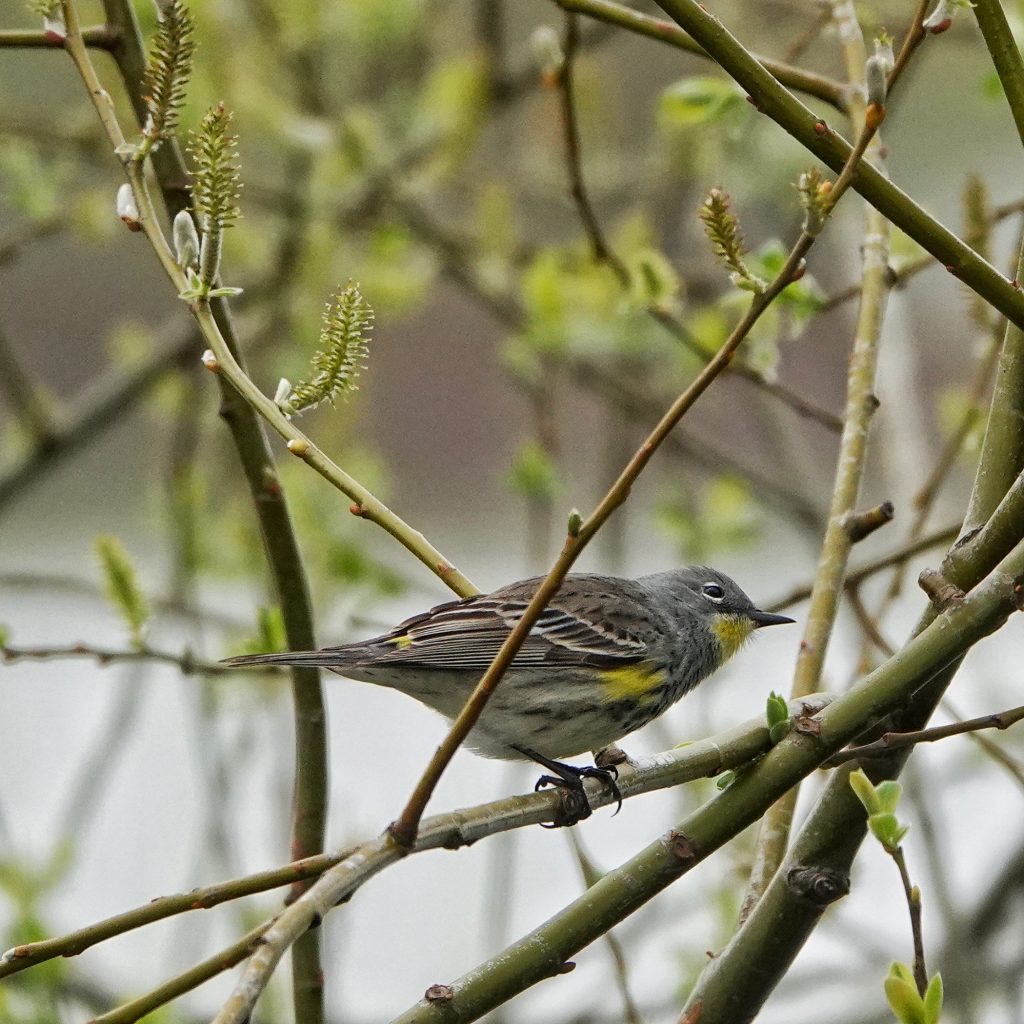
I was also fortunate that there were dozens of these energetic birds, because only about 1 in 10 of them were still perched when I found them in the viewfinder, and of those I only got decent photos of about a third, due to my slow reflexes, inability to focus between branches, and a glary, overcast background that sucked the light out of my targets. But I did get some decent shots, and even captured a couple of Myrtles, and even if all of my photos had been failures it was still a joy to see so many of these delightful, acrobatic warblers.
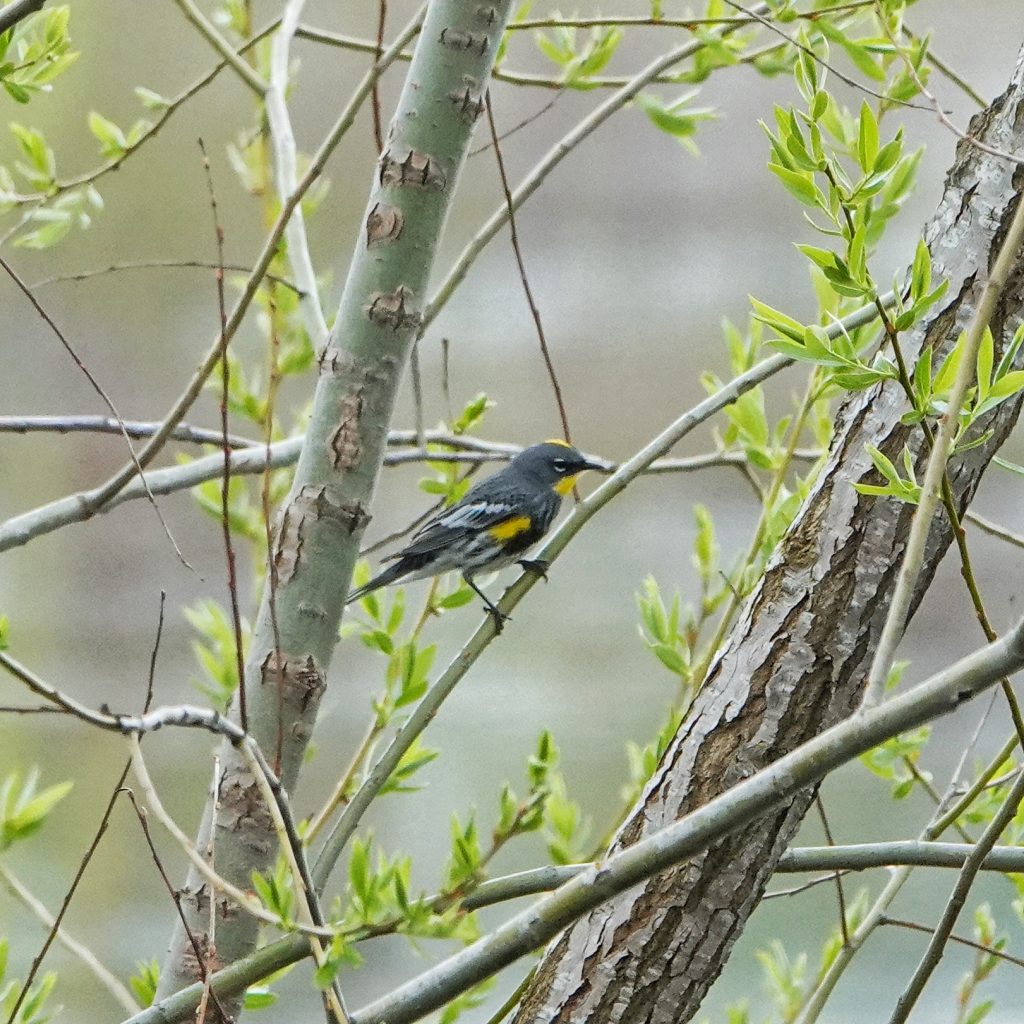
Description-Medium sized (5.5”) warbler with a thin black beak, white eyering, and streaked breast; bluish grey head and back, with a yellow crown, rump, and side patch; Audubon’s subspecies have a yellow throat, more diffuse white on wing, while Myrtles have a white throat and two distinct wing bars.

Similar species-Nashville Warbler has unstreaked yellow breast; Black-throated Grey Warbler has extensive black on throat, lacks yellow rump; Townsend’s Warbler and Hermit Warbler have black throats, extensive yellow on face.
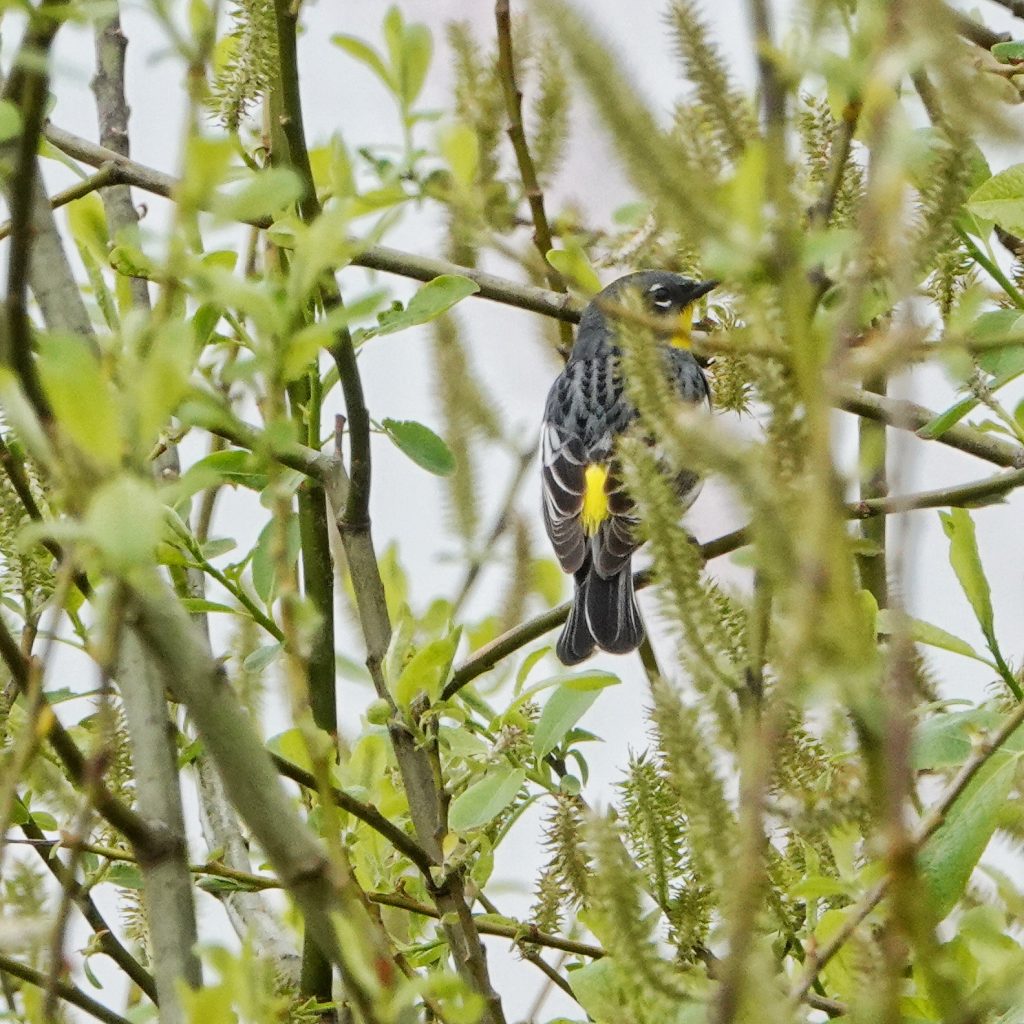
Habitat-Breeds in coniferous and mixed forests; can be found anywhere during migration, but seems most common around water.
Range-North America; region wide during migration, breeds in forested areas, year around in smaller numbers west of the Cascades.
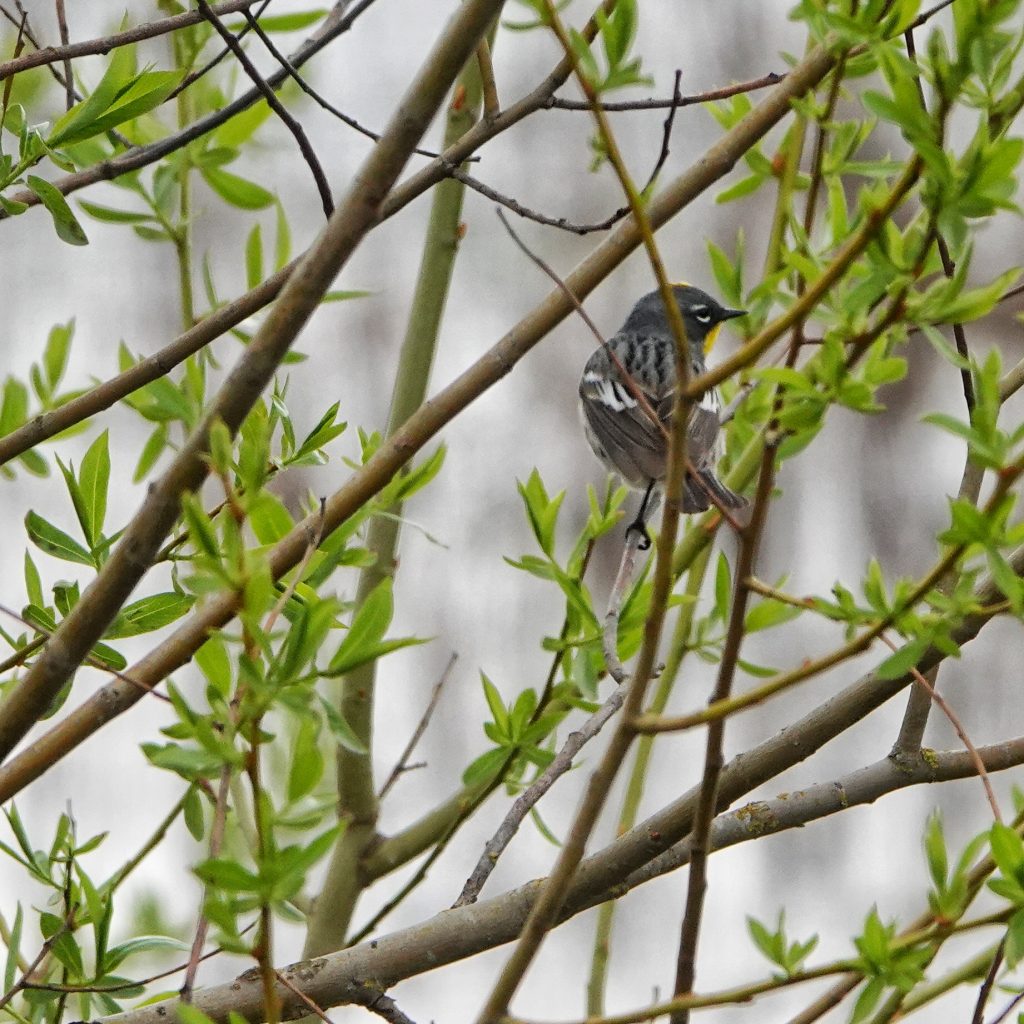
Eats-Insects and fruit; common visitor at suet and peanut butter feeders.
Eaten by-Young are probably prey for any carnivores that can find them; adults are preyed upon by Coopers Hawks, Sharp-shinned Hawks, Screech Owls, Pygmy Owls, and other bird hunting birds.
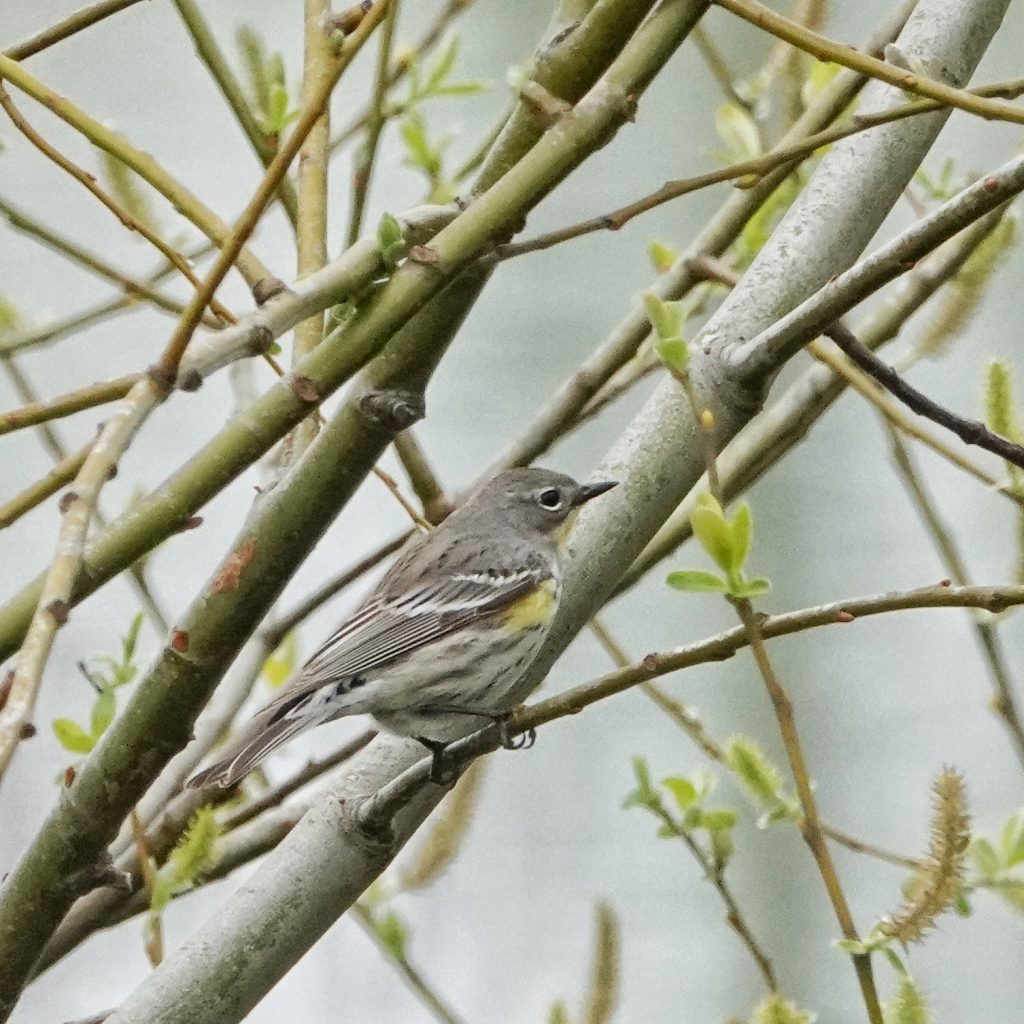
Life cycle– Builds twig and grass nests at least 5’ above the ground in conifers; lays 4-5 cream colored eggs with brown marks that are incubated for 12-13 days; chicks fledge in 10-12 days; may raise two broods per year; may live up to 10 years in the wild.
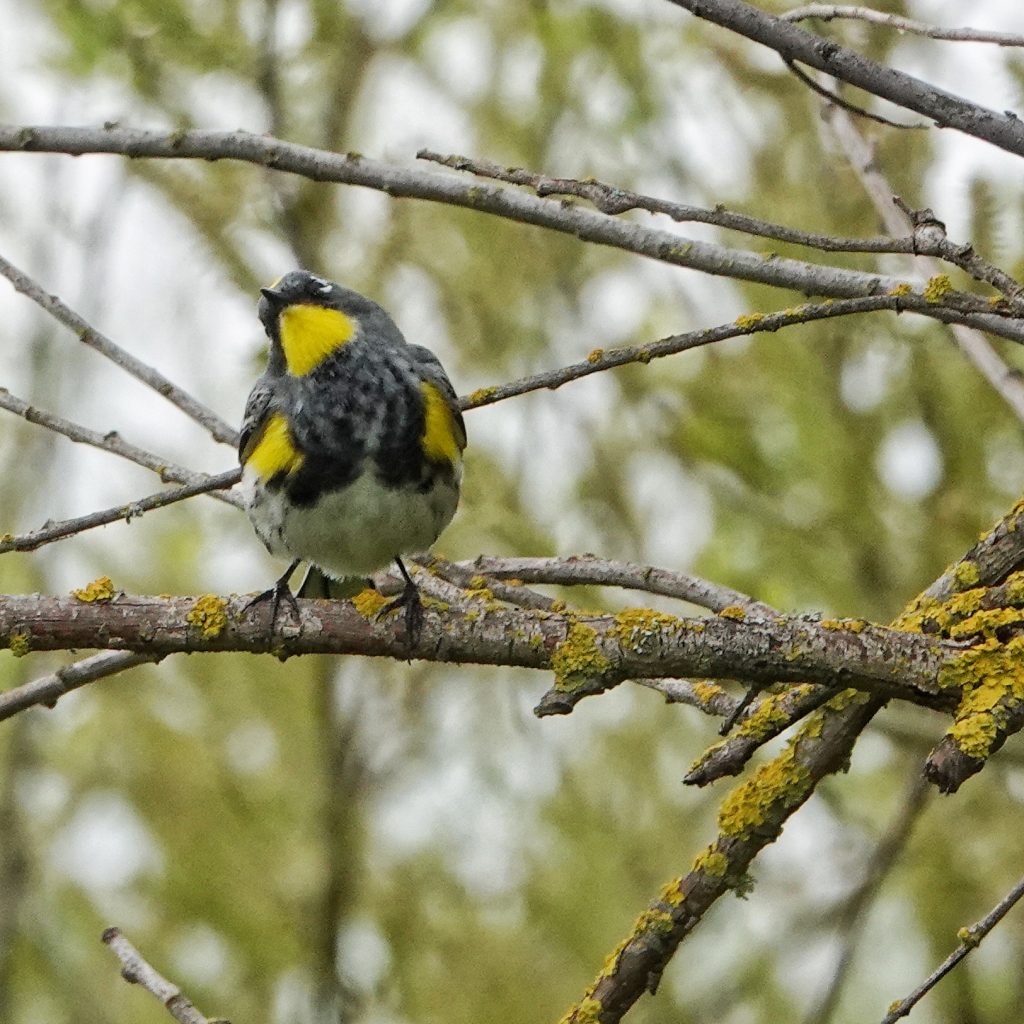
Etymology of names–Setophaga is from the Greek for ‘moth eating’, and refers to this genus’ hawking abilities. The specific epithet coronata is from the Latin for ‘crowned’, and refers to the yellow crown on their head. The common name ‘Yellow-rumped’ refers to the noticeable yellow patch in front of the tail feathers, which is also the origin of the affectionate colloquial name ‘butter butts’.
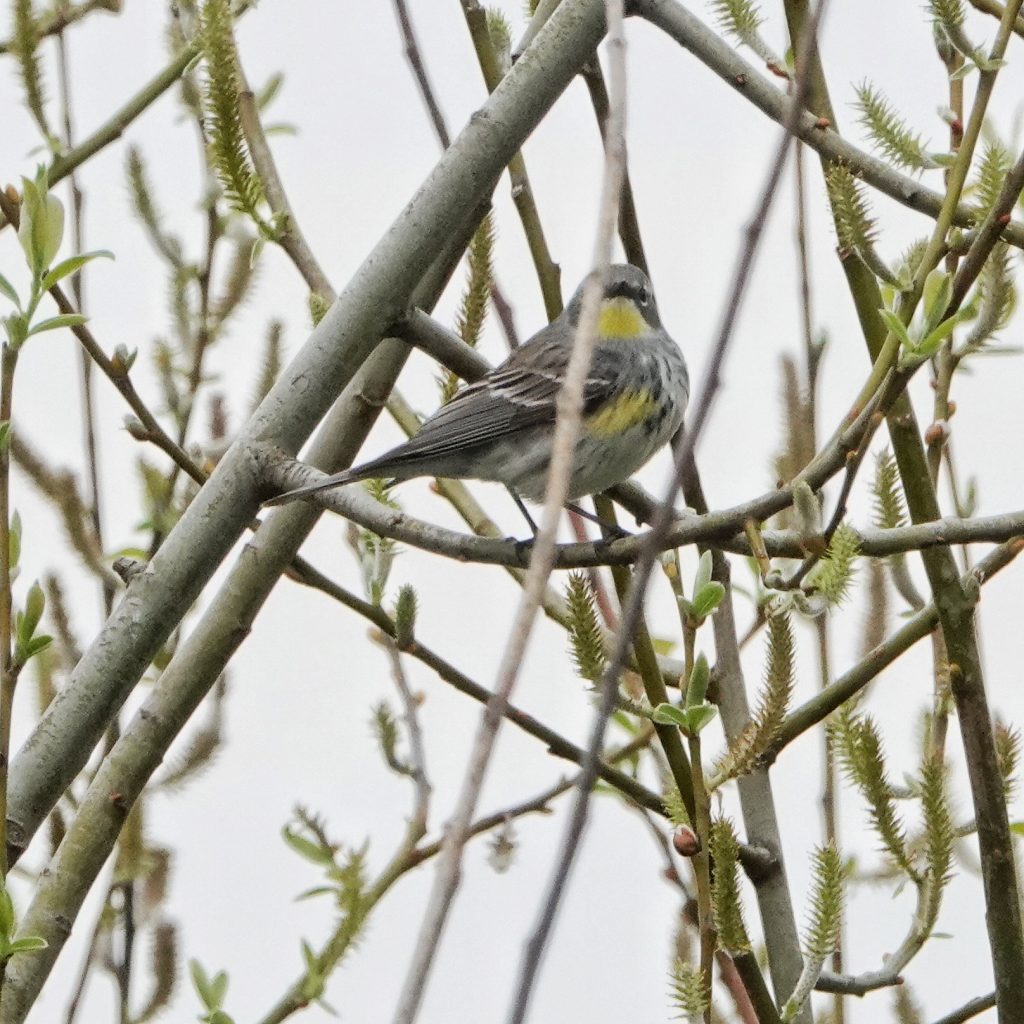
https://www.allaboutbirds.org/guide/Yellow-rumped_Warbler/overview
https://www.audubon.org/field-guide/bird/yellow-rumped-warbler
https://www.allaboutbirds.org/guide/Yellow-rumped_Warbler/id
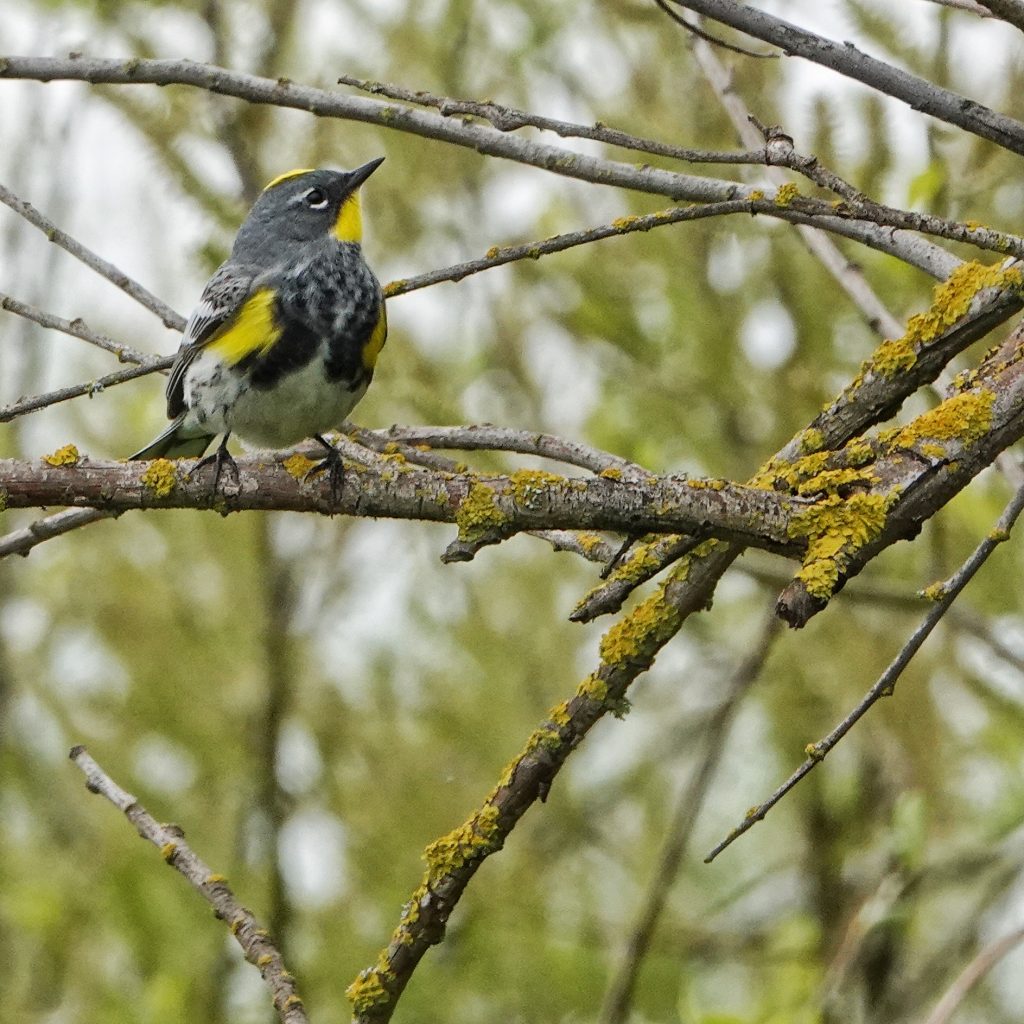
Great discussion of Warblers. Especially helpful on ID and habits.
Thanks!
I think of these birds as one of the true harbingers of spring. I associate them with a friend, Beth, now gone, and they bring me so much joy and reflection. They’re such a GOOD bird.
Couldn’t agree more! Thanks!